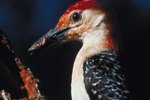
Bald eagles (Haliaeetus leucocephalus) are sizable birds of prey hailing from North America that are often celebrated for their stately and dignified appearances. When it comes to choice in habitat, nearby water is an absolutely requirement for the species. If they can access sufficient fish, these carnivores can usually do just fine.
Basic Information
Mature bald eagles usually reach roughly 30 inches in height. They generally weigh anywhere from 8 to 14 pounds, and the females are typically bigger. Apart from size, both genders are extremely close physically. Bald eagles' physiques are deep brown in coloration, although their tails and heads, in stark contrast, are white. They also have conspicuous yellow beaks. Their feet are also yellow. Despite their naming, they're not even remotely bald, with little pale feathers adorning their heads. The "bald" component of their common name might be a reference to "balde," which is Old English for white. The reproductive season for bald eagles typically commences toward the end of September and lasts into early April.
Meat Eaters
The bulk of the bald eagle food plan is made up of fish. Salmon specifically is a big portion of their diet. Catfish, shad and herring are all also big on the bald eagle menu. However, they do often feed on meat that isn't fish, including crabs, seabirds, reptiles, squirrels, deer, muskrats, rabbits, amphibians, waterfowl and rabbits. Bald eagles also occasionally scavenge, munching on the "leftover" parts of previously killed creatures -- think livestock, for example.
Procurement of Food
Bald eagles seek out prey targets using their strong vision, whether they're resting on tree perches or up in the air. Once they spot something they want, they immediately rush downward and retrieve the prey via their talons. They then promptly go back to perches to relish their meals. Their sturdy and tough beaks are useful for enabling them to handily pull apart their sustenance. As diurnal creatures, bald eagles generally eat in the daytime. Food theft -- at the expense of fellow birds -- is also a common practice in the bald eagle world. When they look for food, they usually do so independently.
Fasting
Bald eagles occasionally take in extremely big portions of food in one sitting. When they do this, it usually takes their bodies a few days to digest everything. They also sometimes go weeks without taking in any food.
References
- Ohio Department of Natural Resources: Bald Eagle
- University of Michigan Animal Diversity Web: Haliaeetus leucocephalus
- National Geographic: Bald Eagle
- New York State Department of Environmental Conservation: Bald Eagle Fact Sheet
- Defenders of Wildlife: Bald Eagle
- San Diego Zoo Animals: Bald Eagle
- NatureWorks: Bald Eagle
- Oregon Zoo: Bald Eagle
- IUCN Red List of Threatened Species: Haliaeetus leucocephalus
- Texas Parks & Wildlife: Bald Eagle
Photo Credits
-
Tom Brakefield/Stockbyte/Getty Images




